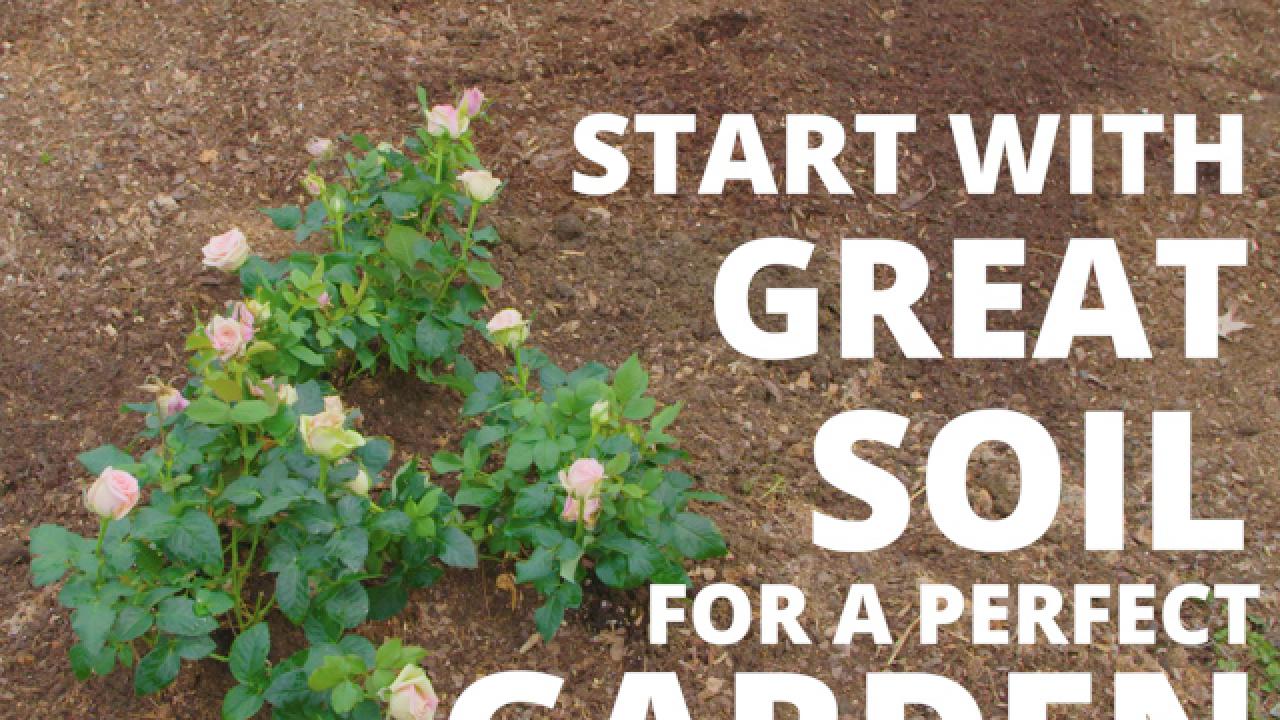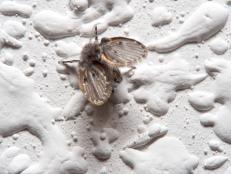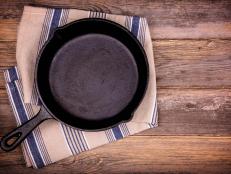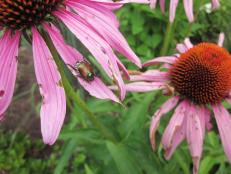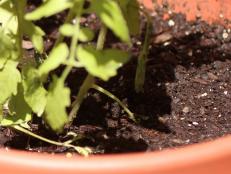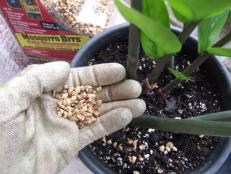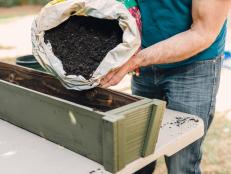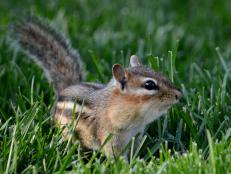How to Prepare Soil for a Garden
Learn how to thoroughly prepare soil for a successful garden.

Julie Forney
Want to know the secret to a beautiful, productive garden? Great soil. Plants thrive when they have the right combination of ingredients to sink their roots into. The old garden adage goes like this: “Never put a $10 plant into a $2 hole.” Investing more time, effort — and yes, money — into soil prep is the best way to ensure new plantings take off and establish quickly.
Great soil doesn’t just happen, and it doesn’t happen overnight. To get great soil, you need to plan, test and make changes to existing soil. It also helps to understand what great soil is supposed to look like.
What Makes Great Soil?
If soil had an ingredients list, it would read something like this: weathered rock, organic matter, air, water and living organisms. When these items are present in the right proportions, you have great soil.
What are the right proportions?
Weathered rock usually accounts for close to 50 percent of a soil sample. It occurs as sand (largest particles), silt (medium) and clay (smallest). Things like freezing and thawing, rain, wind and natural biological activity break rock down into these smaller particles.
Air makes up not quite 25 percent of soil volume. Air hides in soil in pore spaces — the opening between different types of soil particles. It’s important because it keeps soil microorganisms alive and helps with providing nitrogen to plant roots. Air is so important that experts recommend never stepping on planting beds to avoid compacting soil and crushing air pockets.
Water also accounts for close to 25 percent of soil volume. Like air, water hangs out in the pore spaces of soil. When soil is waterlogged, no air spaces remain, and critters living in the soil are forced out (think about earthworms wriggling along sidewalks on rainy days).
Organic matter equals maybe 5 to 10 percent of soil volume, at most, but it’s one of the most important items. Organic matter helps create air pockets and also holds moisture and nutrients. It binds with sand, silt and clay to create larger particles, which is what helps form pores to hold air and water. Lastly, organic matter is a food source for soil microorganisms.
Organisms in soil include a host of living creatures that collectively form what’s known as the soil food web. This group includes microorganisms like bacteria, fungi, nematodes and algae, as well as visible critters, like earthworms, ants, mites and spiders. Plant roots are also part of this web. The soil food web does many things, including decomposing organic matter, converting nitrogen, minerals and fertilizers into forms plant roots can absorb and breaking down pollutants in soil. The soil food web needs three things to thrive: air, water and food (organic matter). When the soil food web is healthy, you definitely have great soil.
Start With a Soil Test

Julie Forney
Before you break ground on a new bed (or even as you start the work), it’s a good idea to take a soil test. You can usually get a test kit through your local Cooperative Extension office for a small fee. A soil test gives you results based on a sample you submit. The test analyzes your growing site, measuring things like soil pH and some nutrients, including phosphorus, potassium and calcium. The soil sample you send is small — only 1 cup. Directions in the kit tell you exactly how to collect the sample.
Soil test results include recommendations for adding specific amendments. Most extension offices will help you interpret and understand the recommendations. The best times to take a soil test are spring and fall.
Remove Sod
To start a new planting area, you need to remove what’s already growing there. In most cases, you’ll be faced with lawn, which can be removed in several ways. Depending on the size of the area, you can dig it out by hand or use a sod cutter. If you have several weeks prior to planting, you can smother existing grass by covering it with five to six layers of newspaper topped with at least 3 inches of compost. With this method, the grass and newspaper decompose and add organic matter to the planting area. This technique works exceptionally well when prepped in fall and then planted the following spring.
Add Organic Matter
There are two basic tenets regarding organic matter. First, you can’t add too much. Second, you should mix it into existing soil. Every type of soil benefits from organic matter. It helps sandy soil retain water and nutrients better, and it helps clay soil to loosen and let water percolate through. Organic matter feeds the soil food web, which causes a host of biological processes to occur that help plants to absorb nutrients, vitamins and minerals.

Julie Forney
Organic matter is always good and works best if you mix it into existing soil. With new beds, just sitting it on top of soil is not enough. You need to blend it in to a depth of 6 to 12 inches. The deeper you prep the soil, the better your garden will be. This is where the elbow grease comes in.
Dig the organic matter into soil by hand using a digging fork, broad fork or shovel. Or automate the job with a rototiller, which digs down at most 8 inches. An easy way to get to that magic 12-inch depth is to remove one shovel blade-depth of soil after removing sod. Toss this soil onto a tarp, then add the organic matter (and any other amendments the soil test recommends), rototill it in, and replace the soil. This preps your soil to a depth of roughly 14 inches, which provides an ideal foundation for new plantings.
What About Fertilizer?
Follow the recommendations of your soil test. You can add a slow-release fertilizer when you tackle bed prep, especially if you’re adding organic matter that’s not broken down, like straw, chopped fall leaves or sawdust. Fertilizer jump-starts the breakdown processes. Also add any amendments the soil test suggests.
Get the Timing Right
The best time of year to tackle bed prep is before planting season. That way your soil is ready to go for the growing season. In all but the warmest regions, gardeners typically tackle soil prep in fall, which provides ample time for organic matter to break down. In coldest zones, fall prep allows winter to work on soil. As soil freezes and thaws, it helps break down amendments.
No matter which time of year you tackle soil prep, avoid doing it when soil is too wet. When you grab a handful of soil and squeeze, if it clumps tightly together or even releases water, it’s too wet to work. You can actually damage soil by working in it when it’s too wet. Too dry is also not good. Aim to work in soil when it has some moisture content, but still crumbles apart easily.
